
Pioneering Astrobiology:

Astrobiology, often referred to as exobiology, is a relatively young field but one filled with excitement and limitless potential. It delves into the fundamental questions about life’s origin, distribution, and the conditions necessary for it to thrive on other celestial bodies. Astrobiologists seek to understand the possibility of extraterrestrial life, drawing from a range of scientific disciplines to explore the myteries of the cosmos.
Life’s Essential Ingredients:

In the vastness of the universe, researchers are on a quest to identify the key ingredients necessary for life to exist. Water, considered the elixir of life, has been detected on several celestial bodies, including Mars, Europa, and Enceladus. These discoveries raise tantalizing possibilities of subsurface oceans, the potential cradles of life. The exploration of extremophiles—microorganisms that thrive in harsh environments on Earth—also informs our understanding of where and how life might exist beyond our planet.
The Search for Exoplanets:

A crucial aspect of astrobiology research is the hunt for exoplanets—planets orbiting distant stars that could potentially harbor life. With the advancement of telescopes like Kepler and TESS, scientists have identified thousands of exoplanets, some of which lie within the habitable zone, where conditions might be right for liquid water and life to flourish. The study of exoplanetary atmospheres provides valuable insights into the potential for habitability.
Life Beyond Earth: The Big Question:

While astrobiology has made significant strides in understanding the conditions required for life, the ultimate question remains: Has life already evolved elsewhere in the universe? Recent discoveries of organic molecules on Mars and the persistent search for microbial life on icy moons bring us closer to unraveling this enduring mytery.
Conclusion: Navigating the Cosmic Frontier:
Astrobiology is a journey into the unknown, an exploration of the myteries of existence beyond Earth. By integrating knowledge from multiple scientific domains, astrobiology research is advancing our understanding of the potential for life in the cosmos. As our tools and technology continue to evolve, the possibilities for discovery expand, and the prospect of finding life beyond Earth becomes more tantalizing. While astrobiology has yet to provide definitive answers, it keeps us engaged in the most profound question of our existence: Are we alone in the universe, or are we but one thread in the intricate tapestry of life that spans the cosmos?
The Perfect Honey Baked Ham Recipe: A Culinary Delight for Every Occasion
Are you ready to elevate your holiday feast or special occasion with a mouthwatering centerpiece? Look no further than the irresistible Honey Baked Ham. This delectable dish, adorned with a sweet and savory glaze, promises to be a showstopper at any gathering. In this comprehensive guide, we’ll take you through the step-by-step process of creating the perfect Honey Baked Ham, from selecting the ingredients to mastering the cooking techniques.
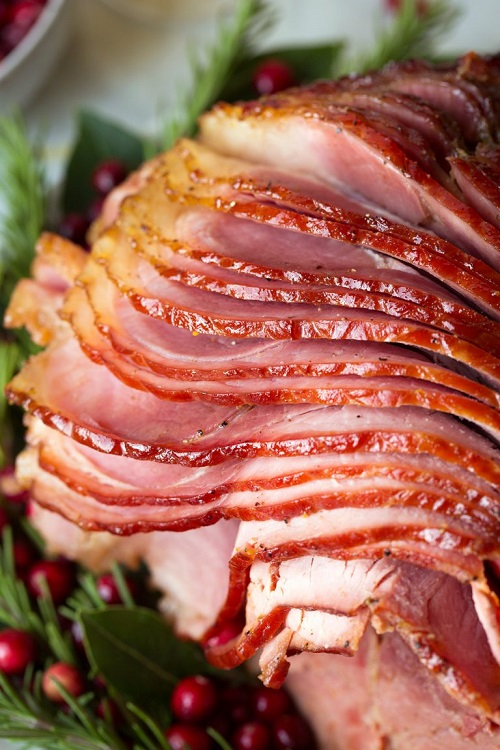
Gathering the Ingredients
To embark on your culinary journey, begin with the essentials. You’ll need a fully cooked spiral sliced ham weighing between 8 to 10 pounds. This savory delight will be complemented by a harmonious blend of flavors, including 2 tablespoons of unsalted butter, 1/2 cup of honey, 1/2 cup of packed light brown sugar, 1 tablespoon of Dijon mustard, 3/4 teaspoon of freshly ground black pepper, 1/4 teaspoon each of ground cinnamon, ground ginger, and ground cloves. For an extra burst of freshness, consider adding 1/2 teaspoon of fresh orange zest (optional). To ensure optimal results, have an oven bag on hand.
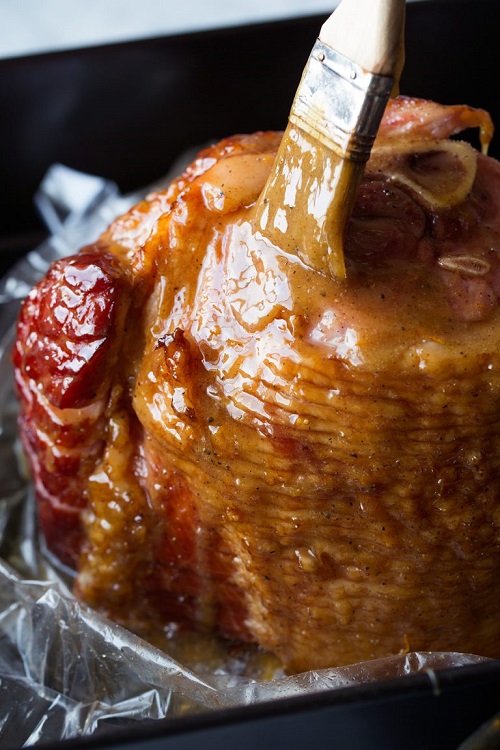
Preparing the Ham
Before diving into the cooking process, it’s crucial to prepare the ham adequately. Leave the ham’s plastic or foil covering intact and allow it to soak in hot tap water for 45 minutes. After draining the water, repeat the process for an additional 45 minutes. As the ham rests, preheat the oven to 250 degrees, positioning the rack at the lowest level. Unwrap the ham, remove any plastic disk below the ham bone, and place it in the oven bag. Secure the bag tightly around the ham, making four small slits on top. Bake until the center reaches 100 degrees, approximately 1 to 1 1/2 hours.
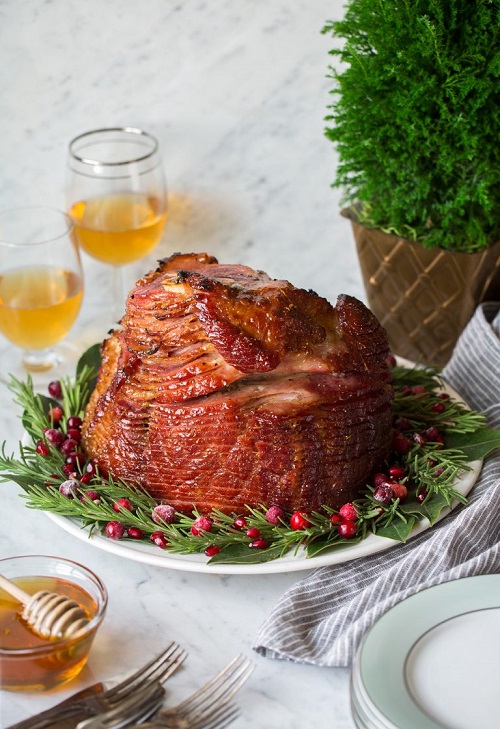
Crafting the Glaze
While the ham bakes, prepare the luscious glaze that will impart a symphony of flavors. In a saucepan over medium heat, melt the butter and add brown sugar, honey, Dijon mustard, pepper, cinnamon, ginger, and cloves. Whisk continuously until the sugar dissolves, which should take about 2 to 3 minutes. For an extra layer of complexity, stir in the optional fresh orange zest. Allow the glaze to cool until it reaches a honey-like consistency, re-warming it if necessary.
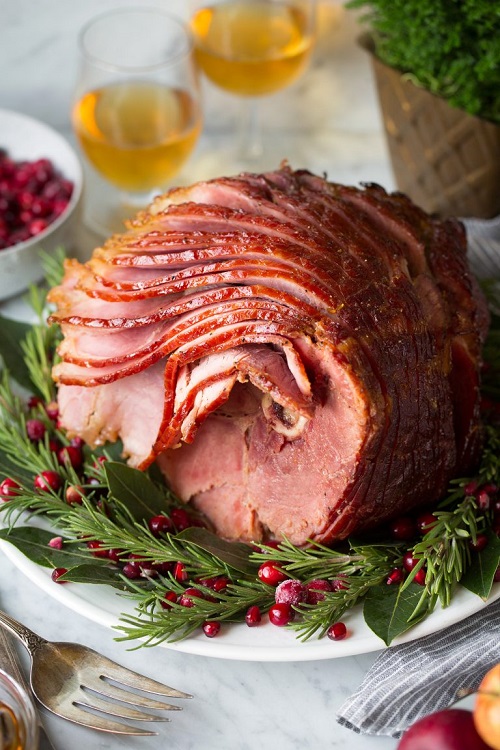
Glazing and Final Baking
As the ham approaches perfection in the oven, it’s time to unleash the magic of the glaze. Increase the oven temperature to 375 degrees. Cut the oven bag, exposing the ham, and generously brush it with half of the glaze. Bake for 5 minutes, then repeat the process with the remaining glaze, baking for an additional 10 minutes. Once done, remove the ham from the oven, tent it with foil, and let it rest for 10 minutes before carving.
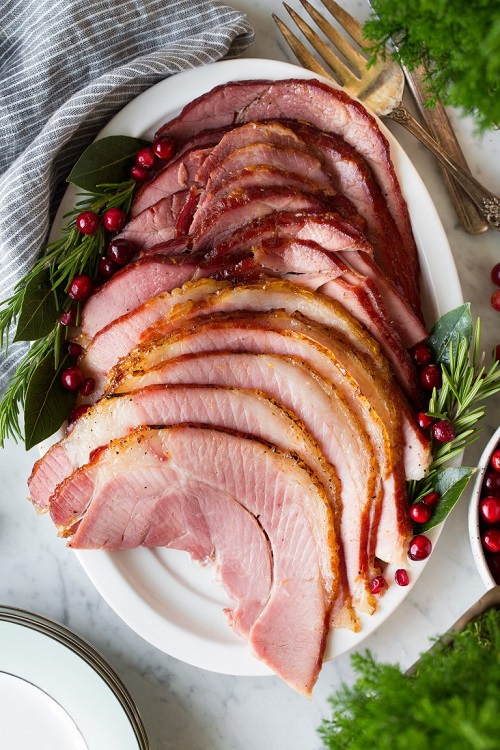
Congratulations! You’ve successfully crafted a Honey Baked Ham that promises to be the star of any occasion. Whether it’s a festive gathering or a simple family dinner, this culinary triumph is sure to leave lasting impressions. Share the joy of this delightful dish with your loved ones and savor the moments of togetherness around a table adorned with the fruits of your labor.